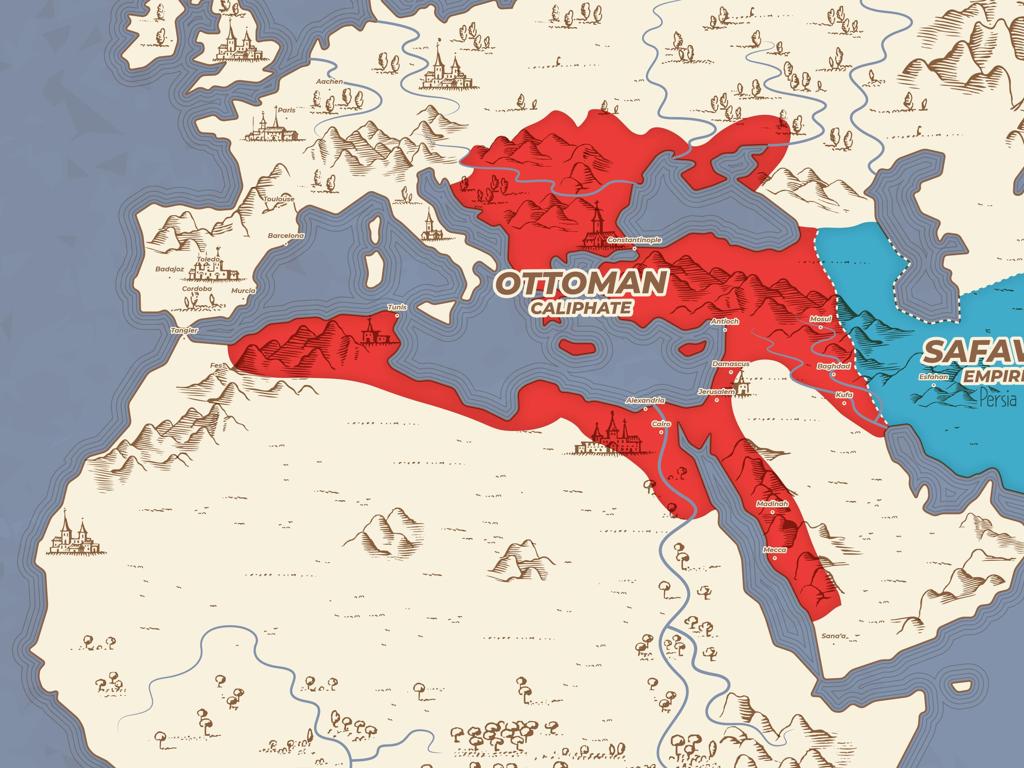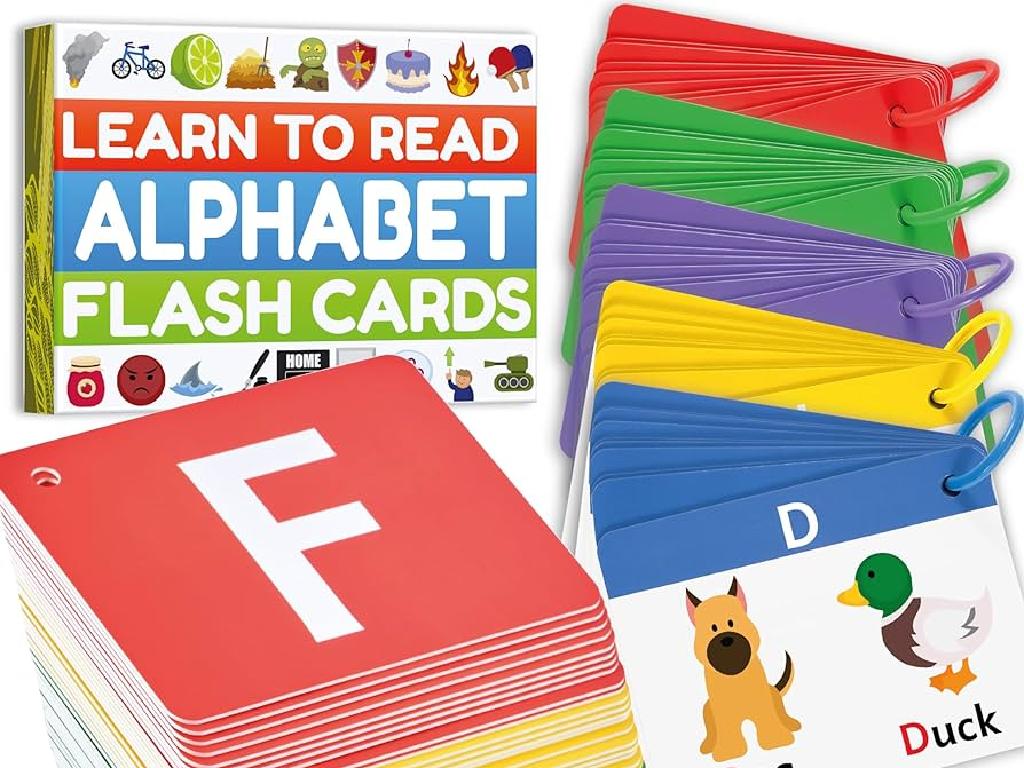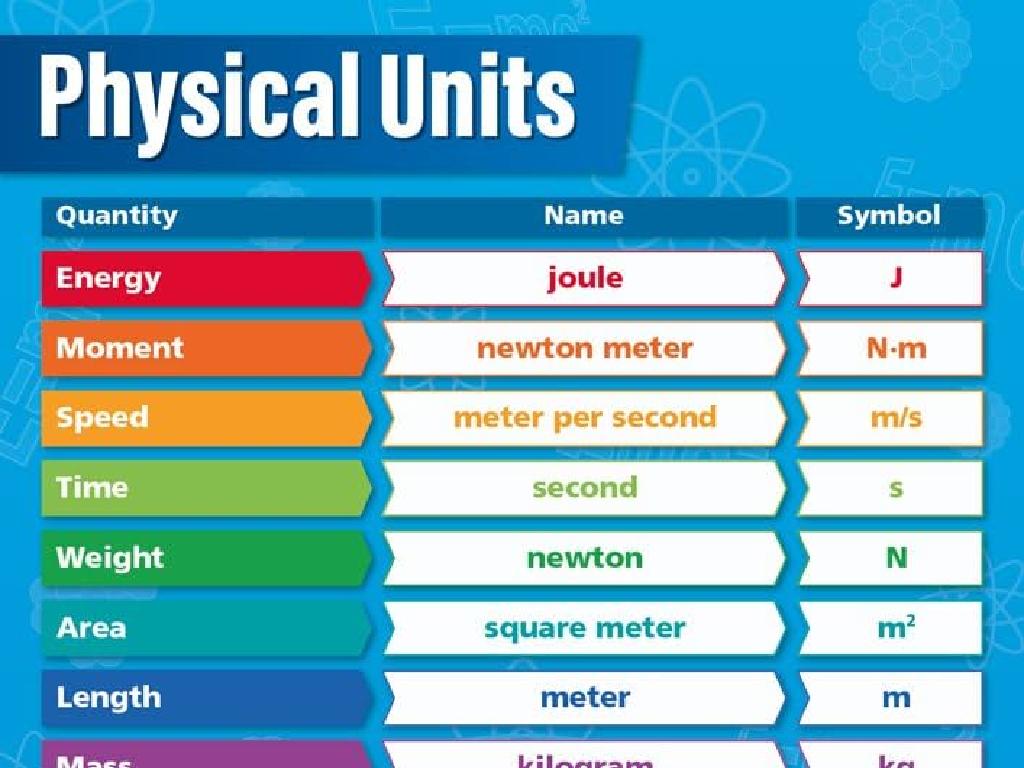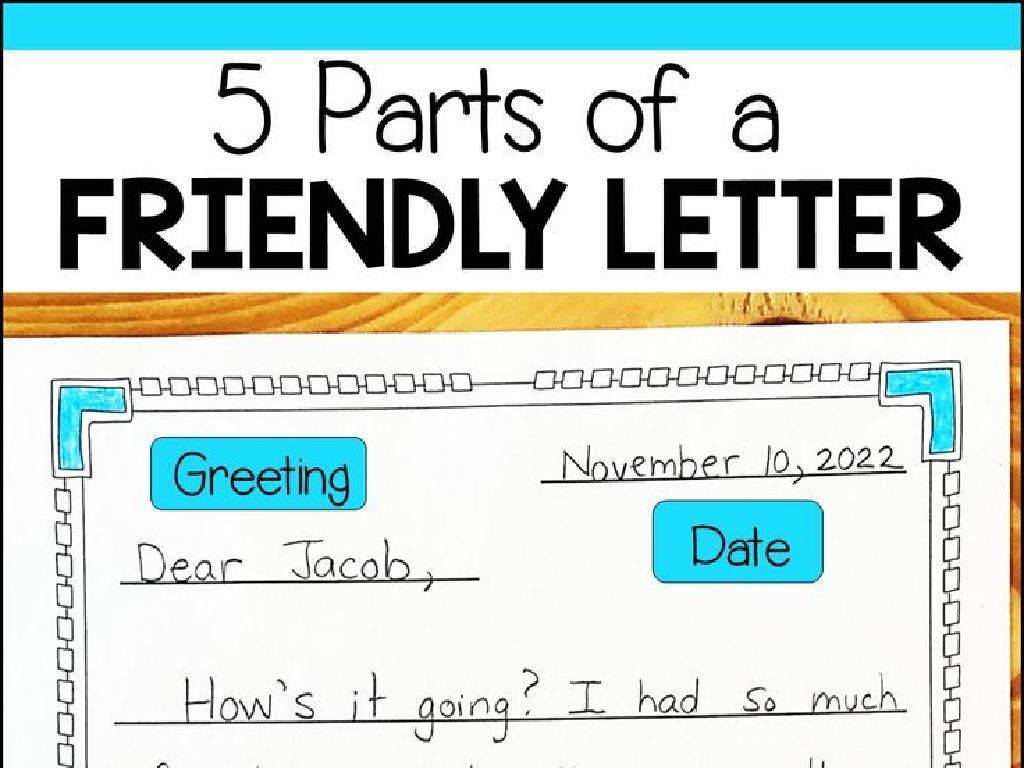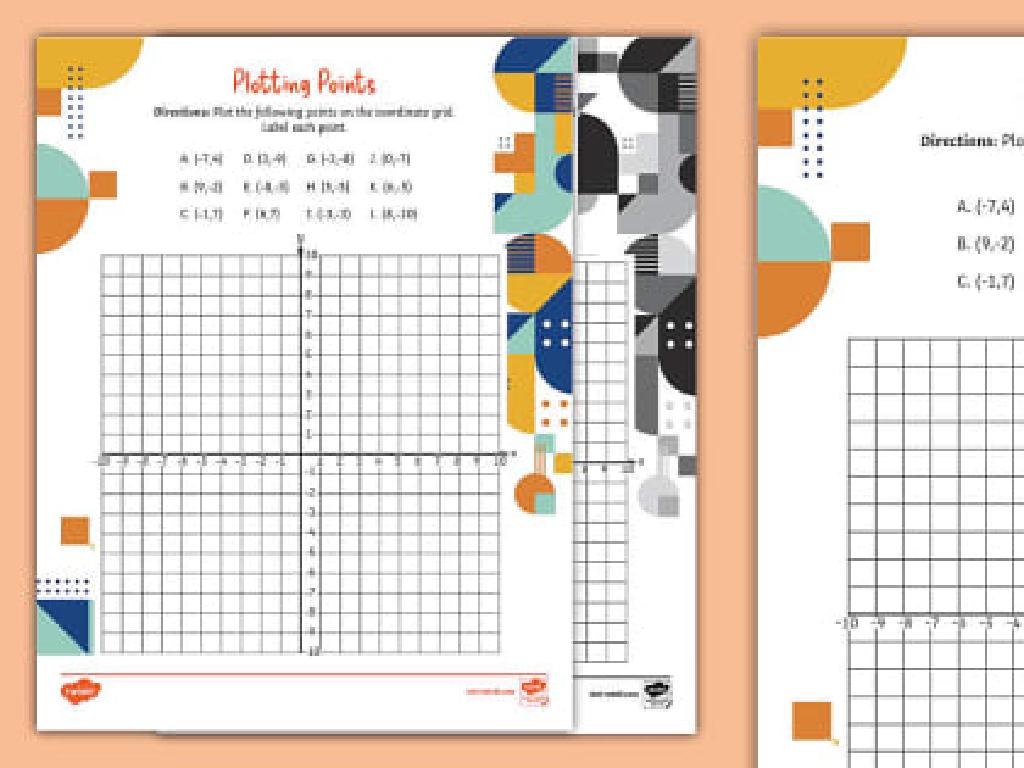Sort Objects Into Categories
Subject: Language arts
Grade: Kindergarten
Topic: Categories
Please LOG IN to download the presentation. Access is available to registered users only.
View More Content
Welcome to Categories!
– Greet the class: Good morning!
– Today’s lesson: Sorting objects
– We’ll learn to group objects by type
– Why learn categories?
– Sorting helps us understand and classify the world
– Categories help us organize
– Like putting toys in the toybox, books on the shelf
|
This slide is designed to introduce Kindergarten students to the concept of categories in a simple and engaging way. Start the class with a warm greeting to create a welcoming atmosphere. Explain that the day’s lesson will focus on learning how to sort objects into different groups based on their characteristics. Emphasize the importance of understanding categories as a way to organize and make sense of the world around them. Use relatable examples such as organizing toys or books to illustrate the concept. The goal is to make the students comfortable with the idea of categorization as a tool for organization in their daily lives.
Learning About Categories
– What is a category?
– A group with common features
– Ways to sort things
– Sort by color, shape, size, or use
– Examples of categories
– Fruits, toys, clothes
– Practice sorting!
|
This slide introduces the concept of categories to Kindergarten students. Begin by explaining that a category is like a family for objects that share something in common. Show them how to sort objects into groups based on different characteristics such as color, shape, size, or their use. Provide clear examples by grouping familiar items like fruits by color, toys by shape, or clothes by size. After the explanation, engage the students in a hands-on activity where they practice sorting items into categories. This will help them understand the concept and remember the different ways to categorize objects.
Sorting by Color
– Objects come in many colors
– Create groups based on color
– Put red things in one group, blue in another, etc.
– Find and sort all red objects
– Look for red items to place in the red group
– Practice sorting with other colors
– After red, choose another color to sort
|
This slide introduces the concept of sorting objects by color, a fundamental skill in categorization. Start by showing various objects in different colors to the class. Explain that items can be grouped by their color, which helps us organize and find things more easily. Engage the students by asking them to participate in finding all the red objects in the classroom. Once they have mastered sorting by red, encourage them to practice sorting objects by other colors. This activity develops their observational skills and their ability to classify objects based on visual characteristics.
Sorting by Shape
– Learn to sort by shape
– Create groups for each shape
– Like putting all circles together
– Sort objects into shape groups
– Find shapes around us and group them
– Circles, squares, and triangles
– We’ll see these shapes in many objects
|
This slide introduces the concept of sorting objects based on their shapes, a fundamental skill in recognizing patterns and organizing information. Encourage the children to think about common shapes they see every day and how these shapes can be grouped. Provide a variety of objects or pictures that include circles, squares, and triangles, and guide the students in sorting these items into the correct categories. This activity will help develop their visual discrimination skills and their ability to categorize objects. Make sure to have physical examples for the children to handle and sort, as tactile learning is very effective at this age. Reinforce the names of the shapes as students work through the sorting activity.
Sorting by Size
– Understanding size categories
– Small, medium, and large groups
– Items can be sorted into small, medium, or large.
– Organize toys by size
– Look at your toys, can you group them by their size?
– Class activity: Sort it out!
– We’ll work together in class to sort different toys.
|
This slide introduces the concept of sorting objects by size, which is a fundamental skill in categorization. Start by explaining that size is a property that can be used to group objects. Show examples of small, medium, and large items to give them a clear understanding. For the class activity, provide a variety of toys and ask the children to sort them into the three size categories. This hands-on activity will help reinforce their understanding of size comparison and categorization. Make sure to walk around the classroom to assist and encourage discussion about why they sorted the toys in a particular way. This will also help with their descriptive language skills.
Sorting by Use: Toys, Tools, and Clothes
– Sort items by their use
– Examples: toys, tools, clothes
– Toys for play, tools for fixing, clothes for wearing
– Match items to correct categories
– Toys go with toys, tools with tools, clothes with clothes
– Practice sorting together
|
This slide is aimed at teaching Kindergarten students how to categorize objects based on their use. Start by explaining that items can be sorted by what we use them for. Show examples of toys, tools, and clothes and discuss their uses. Toys are for playing, tools are for fixing things, and clothes are for wearing. Have the children practice by sorting a mixed group of items into the correct categories. This activity helps develop critical thinking and organizational skills. It’s also a fun, interactive way to engage the students with tangible examples. Make sure to provide a variety of items and encourage the children to explain why they sorted the items the way they did.
Let’s Practice Sorting!
– Time to sort objects
– Sort objects on the table
– We’ll group objects that are alike
– Think about similarities
– Objects in the same group should have something in common
– Think about differences
– Objects in different groups will have distinct features
|
This slide is for a hands-on class activity where students will practice sorting objects into categories. Set up a table with a variety of objects before class. During the activity, guide the students to observe the objects and discuss what characteristics they can use to sort them, such as color, shape, size, or function. Encourage them to ask questions and think critically about why they are grouping objects in a certain way. Possible activities could include sorting by color (all red objects together), by use (toys vs. tools), or by shape (round vs. square objects). This exercise will help develop their analytical skills and their ability to classify objects based on shared attributes.
Class Activity: Sorting Fun!
– Time to sort classroom items!
– Break into small groups
– Sort items into categories
– Think about shape, color, size, or use
– Share your categories with everyone
|
This activity is designed to help students understand the concept of categorization by using tangible classroom items. Divide the class into small groups to encourage teamwork. Provide a variety of items for the students to sort, and guide them to consider different attributes such as shape, color, size, or use when creating categories. After the sorting activity, each group will present their categories to the class, explaining why they sorted the items that way. This will help students articulate their thought process and learn from others. Possible activities for different groups could include sorting by color (e.g., all red items together), by use (e.g., writing tools, toys), by size (e.g., small, medium, large), or by shape (e.g., round objects, square objects). The goal is for students to practice sorting and to understand that objects can be grouped in various ways.
Review and Goodbye!
– Great job sorting today!
– Sorting organizes our world
– Like toys in a toy box or books on a shelf
– Clapping for our hard work
– Let’s give ourselves a big cheer!
– Excited for more learning
|
This slide is meant to conclude the lesson on sorting objects into categories. It’s a moment to celebrate the students’ efforts and reinforce the importance of what they’ve learned. Sorting is a skill that helps with organization and efficiency, which can be related to everyday tasks such as cleaning up their play area. Encourage the children to applaud their own and their classmates’ hard work to build a sense of community and accomplishment. This positive reinforcement helps them look forward to future lessons with enthusiasm.

